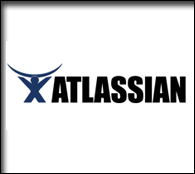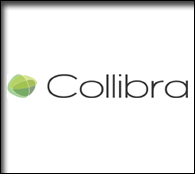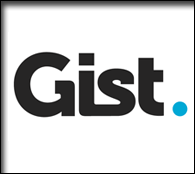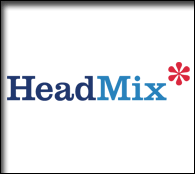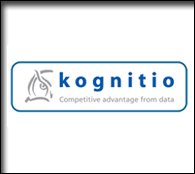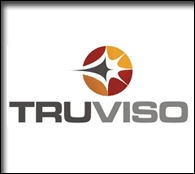general
Reason #2: Great Wifi
by Eric Norlin on Sep.29, 2008, under general
Reason #2 to come to Defrag is a pretty simple, but (I think) important one: Great Wifi.
It’s no secret that wifi at most tech conferences flat-out sucks. And I’m here to tell ya that it doesn’t have to. Great wifi is no mystery. Combine the right provider with the right amount of access points and the appropriate amount of dollars spent (which is actually about 2-3x what most conferences spend on wifi) and BINGO - great wifi. At defrag, you *will* be connected. ![]()
Also of note: Because wifi at the conference isn’t enough, we also pay for your internet connection in your hotel room (assuming you stay at the Defrag Hyatt). How’s that for connectivity?
Be sure to join us.
Andy, Howard and Jason on a Sunday morning
by Eric Norlin on Sep.28, 2008, under general, industry stuff
To say this past week has been “tumultuous” would be an understatement. Late Friday afternoon, I found myself having conversations with local bankers about the worst case scenarios, while bartenders stood there saying, “man, maybe I won’t deposit my check - maybe I’ll stick that in my pocket.” Well, we awake this morning to what is apparently a new world, as it seems that the “bailout compromise” is going to get done.
Simultaneously, I’m finding Jason Calacanis’ email send (entitled, “(The) Startup Depression“) in my inbox, and finding Howard’s great blog post that references Andy’s amazing article from last week. Without getting into the whole mess of agreeing or dis-agreeing with the bailout (I’ve done both in the last week - hasn’t everyone?), let me just say that A) I do side with Andy in thinking this might be one of the greatest “trades” the U.S. could ever make, and B) I couldn’t agree more with Howard — it just isn’t profitable to “bet against the U.S.”
All of it has me looking out over a cloudy Gulf, remembering the 2001-2003 timeframe, and thinking about how momentous this event really is. So, you guessed, I’m resorting to the bullet list:
1. Anyone that underestimates how important this bailout will be is a fool. Howard mentions “new trends” - and I agree. This thing will REMAKE the financial landscape as we know it. It’s akin to “the new deal” in terms of societal impact, and is easily as important as Smoot-Hawley or Glass-Steagall.
Jason’s email send has lots of pretty typical “tactical advice for entrepreneurs” in it, but the one thing that really bothered me was his prognostication that “things are gonna get really bad.” It is simply IMPOSSIBLE to know that right now. This bailout could very easily put a floor under mortgages, save the banks, open the credit markets back up, strengthen the dollar (very weirdly - see andy), help the deficit AND make the U.S. “gubmint” a whole bucketload of money to play with. In short, I’m nowhere NEAR willing to think that we should all be “hunkering down” for 2-3 years of startup nuclear winter. It very well could be that after things sort out (and we may get a rate cut in here still, don’t kid yourselves), this market — and the accompanying economy absolutely lights on fire. Could be. Maybe. No one knows.
Am I planning for “happy times?” Of course not. I’m planning as I always do — to be a long distance runner not a sprinter. Survival is key, but mapping out survival for most people should only take about 5 minutes. After that, you have to consider both A) disaster and B) complete upside surprises - the key here is to give at least equal weighting to both, while knowing that in all likelihood, the upside to disaster ratio is probably preternaturally disposed to at least 60/40 (the universe worked that out long ago).
2. Will lots of startups fail? Yep, undoubtedly. But lots of startups will stay alive too. And they’ll slowly spend money. And they’ll come to conferences. And they’ll get focused and tough and lean. Startups always fail - that’s the name of the game, but startups also always find a way to stay alive. Bottom line: people can talk all day about the benefits of being in silicon valley, but one of the huge downfalls of it is that when times are good, EVERYBODY gets funding. This whole market phenomenon will scare and hurt the “valley” startup scene way more than it will Boulder, Pittsburgh, Austin, the Twin Cities, Atlanta, Research Triangle, or good ole Florida.
3. What should you do? Everyone I know that’s been around the block agrees on this one - START A BUSINESS. What am I doing? Launching a new conference (more on that later). Why? Because I remember January 2002. I remember meeting Andre Durand for lunch in downtown Denver and watching his eyes light up talking about “digital identity.” At the time, I was making ends meet in the web design/copy writing business, and it was just refreshing to see anyone excited about technology — after all, at that point, the entire software industry only had like 25 people still working (HA!). In any case, I didn’t get Andre’s idea. It sounded so…..boring. Three days later, I woke up in a cold sweat with my head filled with ideas about digital identity. I couldn’t read about anything in tech land without seeing how identity was the solution. I had become completely myopic.
I called Andre back and told him that I wanted to be involved “no matter what” - it wasn’t about money, and it wasn’t about startup greatness; the world NEEDED this dammit - and we were just the guys to bring it to life (or so we thought). Within days, I’d met Phil Becker (who has since become my absolute #1 business mentor - and a true, close friend) and the whole thing was off and running. Ping Identity (software company) came to life, and Digital ID World (tech conference) came to life.
People thought we were absolutely nuts, by the way, for starting a tech conference. Comdex had just announced bankruptcy. There were barely any tech conferences around, much less new ones launching. And “digital identity” was kind of a joke (remember Microsoft’s Passport? yea). Well, we muscled through - and made just enough money the first year to allow us to do it all again (which is to say none of us made a dime on the conference in year 1). Needless to say, it all worked. Digital ID World grew (and was sold in 2005). Ping got funding (when it was impossible to get funding). It all came together. There were times when Andre would call and tell me that Ping would be outta money in two weeks if he didn’t raise cash, but it did all come together. Bottom line: start a business.
At the end of the day, every thing’s changed, but every thing is also still the same. The markets will sort this out. Good companies will make it. Defrag will be here in 2009 (so you have that to look forward to). The sun will still rise. And, if I was a betting man (oh wait - I am), I’d bet on U.S. innovation to win out in the end - again.
Smile. Think abundance, not scarcity. Get optimistic. To quote U2, “it’s a beautiful day.” ![]()
P.S. Don’t think there isn’t a certain irony/indicator in the fact that the conference that really kicked off this whole last cycle (Web 2.0) has people like Lance Armstrong and Al Gore speaking. That just wouldn’t have happened in 2002. Ever. And here we are again. It’s really not a matter of “never learning” - it’s human nature, market cycles and rhythm. Just keep focused on dancing, and give up on “dancing with the stars.”
Reason #4: The Conversation
by Eric Norlin on Sep.24, 2008, under conference topics, general
Reason #4 to come to Defrag is simple: The Conversation.
If you look at the Defrag agenda , you’ll see that what might normally be an hour long keynote is only 45 minutes, or what might normally be a 45 minute breakout session is only 30 minutes. That’s by design and for a reason: Defrag is not designed to be a conference where you, the “attendee,” sits passively and gets beaten over the head with powerpoint slides. Rather, Defrag is designed for you, the participant, to interact with your fellow participants around topics. As such, our sessions aren’t meant to be “listening times” - they’re meant to be “conversation times.”
When you come to Defrag, you’ll find yourself joining in the sessions — rapidly. The conversation really is what it’s all about. Join us.
Barbells, transparency and tech’s role
by Eric Norlin on Sep.23, 2008, under general, industry stuff
The news around the “financial crisis” on Wall Street has been everywhere as of late. I’m personally still sorting through things a bit, but I’ve started to piece some things together — which, if you can hang with me long enough, might just lead back to technology:
1. This was not the fault of “short sellers.” Don’t believe the hype on this one. It’s obvious and anyone that’s taken “markets 101″ knows that short sellers aren’t evil. That does not mean that the “system” isn’t broken. For the life of me, I don’t understand why the SEC is temporarily banning short selling on a couple hundred stocks, but won’t institute the “uptick rule.”
2. The real problems here have been two-fold — 1) inteconnected, highly-leveraged financial instruments that even the creators didn’t fully understand; 2) a near total lack of transparency into what these “instruments” actually represented.
3. In both of the cases in #2, technology seems to have played a very big role (or lack of role). In the instance of highly-leveraged instruments, technology (in the form of “fancy new smart guy software”) made people that are supposed to manage risk VERY comfortable with extreme levels of risk (I think 30 to 1 is pretty extreme). In the instance of a lack of transparency, technology has not gotten sufficiently sophisticated enough to provide an instantaneous, real-time, in-depth look into how interconnected financial securities are behaving relative to other measures of value (both liquid and illiquid). The *key* here (I think; it’s a guess) is the *interconnected* part of the transparency.
4. Roger Ehrenberg is completely right in his thoughts about how all of this results in a “barbell shape” for the financial industry. I would argue that the dotcom bust did EXACTLY the same thing to the tech world. After the bubble burst, we found ourselves with a couple of giants, and a whole bunch of highly-focused, niche players that were lean as hell.
5. My question, then, is this: If the “barbell” phenomenon that happened to the tech industry is now happening to the financial industry, are those two related? I suspect, “yes.”
6. My “yes” is based on a gut-reaction that’s saying that technology’s relentless networking (in the complex adaptive systems sense) of everything is bringing an interconnected-ness to industries that simply wasn’t there before (which is to say its removing friction at a basic level of business *structure* in stunning ways). That interconnected-ness led to the problems of transparency that were really the downfall of the investment banks; a lack of transparency that was supercharged and aided by the supposed comfort of “algorithms” that “managed” risk (yea right).
That’s the outline of my thinking to this point. Bottom line: there are meta-changes happening to business itself akin to our move to industrial economies. Note to business book writers: those changes will much more likely result in pain like this than in everyone being a “free agent nation”, selling personal shares in ourselves, or finding some new enlightened way of working.
However, none of that is to say that this isn’t a grand time to be operating in the open spaces of business. Technology’s razor is cutting both ways. At the end of the day, technology will probably be seen to both play a major role in the wall street mess, and be the solution that helps provide needed levels of transparency for modern financial instruments. I believe the greeks called it pharmakos - the scapegoat that is sacrificed to heal the community.
A Recap and a Deal
by Eric Norlin on Sep.22, 2008, under general
Since we’re halfway through the “reasons to come to defrag” list, I thought I’d recap them, and provide a one-sentence summary of each:
#10: Next-gen email thinking: email’s broken and we’re discussing how to fix it.
#9: Grounded Optimism: Economic realism plus strategy equals grounded optimism.
#8: An Intimate Setting: Tired of expo aisles? Join us.
#7: Learn something you can actually apply: Ask big questions and get some actionable answers.
#6: The People: Defrag’s attendees, speakers and participants are really what it’s all about.
Reasons #5 through 1 will be coming soon, but in the meantime, register for a full conference pass this week and I’ll pick up your hotel room for 2 nights! Simply register for a full price conference pass, and you’ll get an email from us to get you booked into the hotel. Don’t delay!
Cisco knows that collaboration is key
by Eric Norlin on Sep.19, 2008, under general, industry stuff
Cisco has been screaming that collaboration is key to its future growth — both in analyst calls and with its actions. They backed this up again today by acquiring Jabber. (Full disclosure: Andre Durand, one of the founders of Jabber, is one of my close friends and has been a business partner in the past.) With this acquisition, Cisco has now acquired Webex, IronPort, Securent, PostPath and Jabber on the collaboration front. Looking briefly at each:
Webex: conferencing and collaboration platform
IronPort: email and messaging (web) security.
Securent: entitlement management (control and audit access).
PostPath: Linux-based email and collaboration suite.
Jabber: XMPP/Presence and IM company (as much an XMPP platform as anything).
When viewed in pieces, its pretty easy to see that Cisco is quickly assembling a collaboration portfolio - and I expect that they’ll continue acquiring companies in this space (in fact, I predict at least 1 defrag sponsor will get acquired by Cisco in the next 12 months). Over on twitter, Sam Lawrence and I have been commenting on how Cisco and HP are probably going to be HUGE forces and players in the “social computing” space. That seem obvious in the wake of today’s news.
It’ll be fun to watch this wave build, and it’s one of the reasons that I’m confident that the future of the “defrag space” is a nice, big growth curve.
Reason #6: The People
by Eric Norlin on Sep.18, 2008, under conference topics, general
Reason #6 to come to Defrag: The People.
Pete Warden has done a herculean job of outlining a “who’s who” from the Defrag speaker list. But, of course, the speakers aren’t the only cool people at defrag - in fact, it’s not even close! The attendees at Defrag make the whole event sing. If you’ve been to an “expo,” or really big conference lately (over 1000 people), you’ll quickly notice how hard it is to actually have real conversations with new people. We’ve limited Defrag’s size on purpose - for precisely this reason. Reason #6 to come to Defrag: the people — all of them.
#8: An intimate setting
by Eric Norlin on Sep.16, 2008, under conference topics, general
Reason #8 to come to Defrag: An intimate setting.
There are lots and lots (and lots) of tech conferences. And it’s no secret that most of those are run by big media companies, while some of them are run by “independent conference organizers.” Defrag falls into the latter camp — probably more so than most. Which brings me to reason #8…
Most folks don’t realize that Defrag really is run by myself and my wonderful wife, Kim. We spend about 7 months out of the year ramping up toward Defrag. We tend to every detail, obsess over minutiae, and just flat out care. I think all of that contributes to what I would call “an intimate setting” at Defrag. My goal, when people show up at Defrag, is to have them feel relaxed, ready to learn, and -most importantly- wanting to get engaged in the conversation.
I’ve often told sponsors of Defrag that the thing they’ll notice right away is that they’ll end up involved in “intimate” conversations — or conversations with real depth. And I think that shows through in what our attendees bring to the table as well. Our part in this whole saga is making sure that no one at Defrag is “just a number” (or registration).
We work very hard to create the right atmosphere - and believe me when I say, nothing “just happens” — but I do believe that our level of obsession is directly related to the kind of experience you’ll have at Defrag. I hope you’ll join us.
A random sample
by Eric Norlin on Sep.12, 2008, under general
I just pulled a random sample of company names coming to Defrag — good stuff:
Union Square Ventures
Google
Qualcomm, Inc.
Intuit
NC State University
Thomson Reuters
University of Colorado
Sigma Partners
Global Catalyst Partners
Ziff Davis enterprise
Lightspeed Venture Partners
Burton Group
The 451 Group
AMR Research
Honeywell
First Round Capital
Sun Microsystems, Inc.
Penn State
Bottom line: lots of amazing people! I hope to see you there. ![]()
#10: Next-gen email thinking
by Eric Norlin on Sep.12, 2008, under general
I’ve decided to do a series of posts highlighting 10 “reasons to come to Defrag,” though they’ll really be more about cool things happening at Defrag. And we’re off…
Reason #10: Next-gen email thinking
There are a bunch of things happening around the periphery at Defrag; stuff that enhances and expands upon what’s going on the in the sessions. One of those things is a Sunday evening dinner being hosted by Chris Wand of Foundry Group around “what’s next” in email (or “next-gen email,” or “email 2.0″ ). I’ve spoken with Chris about the topic and what he’s really wanting to focus on and think about is how email can do a better job of handling things in an enterprise-setting. But I think it crosses over to the user-side as well.
Chris is planning to head out to dinner on Sunday eve at a local Denver-area restaurant and spend a few hours digging into the topic. We’ll be sending out a notice to all registered Defrag attendees letting them know about the dinner logistics - and I think Chris will end up limiting it to a specific number (or if we go over a reasonable number, splitting into various parties).
Following the dinner, we’ll have a BIG discussion about “fixing foundational information channels” at Defrag - where we’ll be taking on email, calendaring, RSS, — and everything we can do to re-imagine those tools.
That’s one of many things happening around Defrag that I’ll try to expose over the next few days. In the meantime, be sure to join us.
